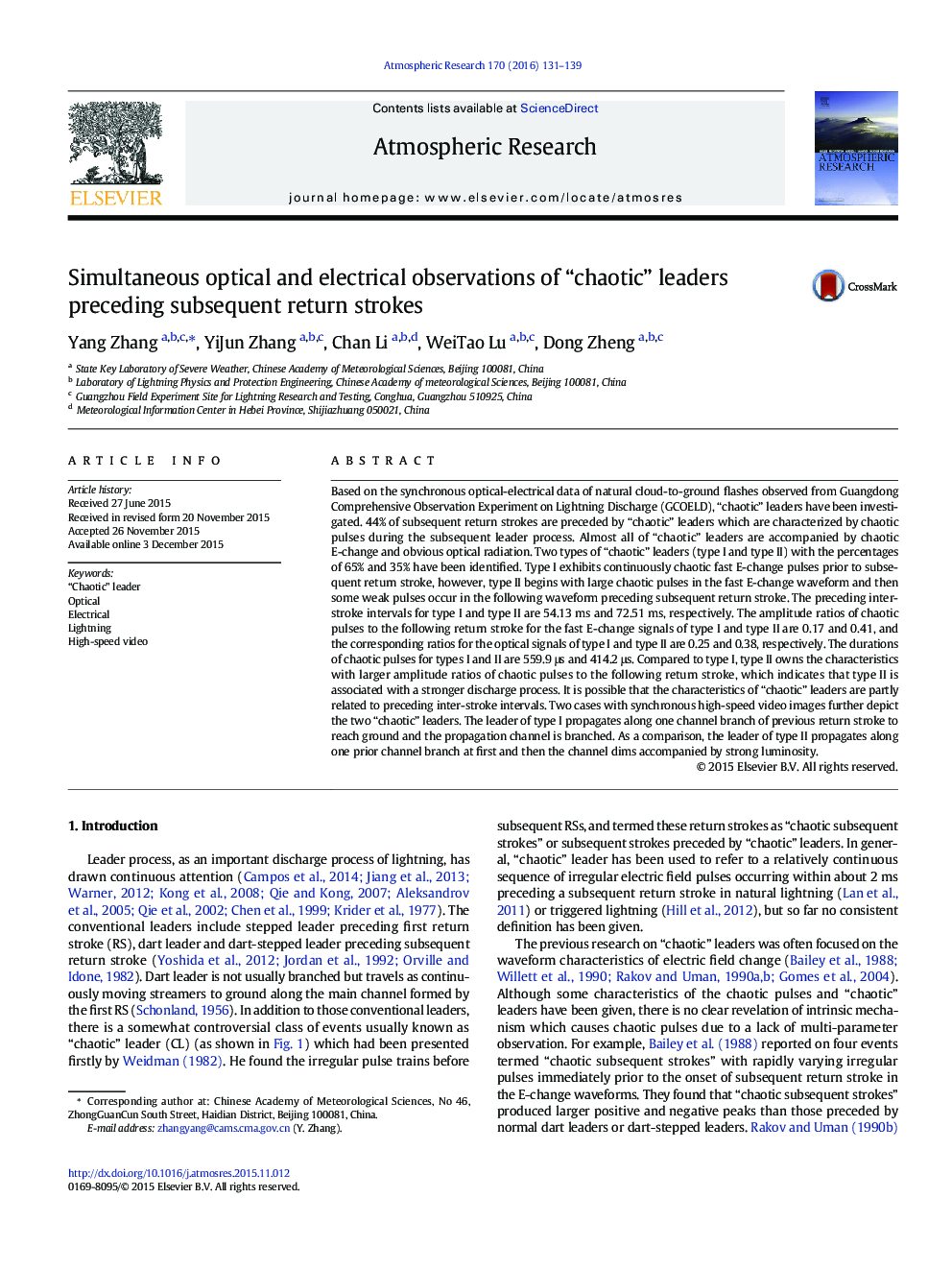| کد مقاله | کد نشریه | سال انتشار | مقاله انگلیسی | نسخه تمام متن |
|---|---|---|---|---|
| 4449589 | 1620507 | 2016 | 9 صفحه PDF | دانلود رایگان |
• Synchronous optical-electrical data of the subsequent leaders has been observed.
• Almost all of “chaotic” leaders are accompanied by optical radiation and erratic E-change.
• Two types of “chaotic” leaders (type I and type II) have been identified.
• The characteristics of “chaotic” leaders are investigated.
• Cases with synchronous high-speed video images further descript the two “chaotic” leaders.
Based on the synchronous optical-electrical data of natural cloud-to-ground flashes observed from Guangdong Comprehensive Observation Experiment on Lightning Discharge (GCOELD), “chaotic” leaders have been investigated. 44% of subsequent return strokes are preceded by “chaotic” leaders which are characterized by chaotic pulses during the subsequent leader process. Almost all of “chaotic” leaders are accompanied by chaotic E-change and obvious optical radiation. Two types of “chaotic” leaders (type I and type II) with the percentages of 65% and 35% have been identified. Type I exhibits continuously chaotic fast E-change pulses prior to subsequent return stroke, however, type II begins with large chaotic pulses in the fast E-change waveform and then some weak pulses occur in the following waveform preceding subsequent return stroke. The preceding inter-stroke intervals for type I and type II are 54.13 ms and 72.51 ms, respectively. The amplitude ratios of chaotic pulses to the following return stroke for the fast E-change signals of type I and type II are 0.17 and 0.41, and the corresponding ratios for the optical signals of type I and type II are 0.25 and 0.38, respectively. The durations of chaotic pulses for types I and II are 559.9 μs and 414.2 μs. Compared to type I, type II owns the characteristics with larger amplitude ratios of chaotic pulses to the following return stroke, which indicates that type II is associated with a stronger discharge process. It is possible that the characteristics of “chaotic” leaders are partly related to preceding inter-stroke intervals. Two cases with synchronous high-speed video images further depict the two “chaotic” leaders. The leader of type I propagates along one channel branch of previous return stroke to reach ground and the propagation channel is branched. As a comparison, the leader of type II propagates along one prior channel branch at first and then the channel dims accompanied by strong luminosity.
Journal: Atmospheric Research - Volume 170, 15 March 2016, Pages 131–139
